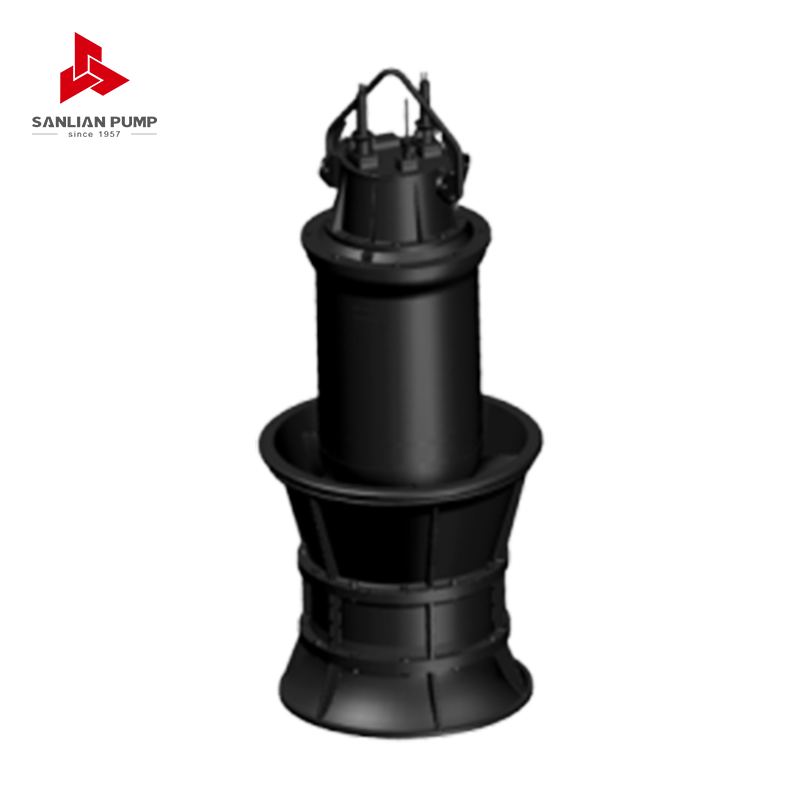Sanlian Pump Industry Group is a manufacturing enterprise based on water supply and drainage equipment. The group company integrates R&D, design, casting, production and sales, and provides customers with modern, digital and intelligent comprehensive solutions for fluid transportation and integrated systems.
How Pull-Out Mixed Flow Pump Designs Improve Maintenance Efficiency and Reduce Long-Term Costs
In the industrial pumping world, efficiency isn’t just about flow rates and energy use—it’s also about how quickly and affordably a system can be maintained over time. One standout feature of the modern mixed flow pump is its pull-out design, which directly addresses the ongoing challenge of reducing downtime without compromising system performance. This seemingly simple design innovation has far-reaching effects, especially in sectors where equipment uptime is essential and maintenance budgets are tightly controlled.
A pull-out structure allows for the removal of internal components such as the impeller, shaft, and mechanical seals without disconnecting the pump casing from the pipeline. In practice, this means technicians can access the most maintenance-intensive parts of the mixed flow pump without the need for extensive disassembly, lifting equipment, or realignment procedures. For facilities operating in tight maintenance windows—like power plants or municipal water systems—this design can translate into hours or even days of saved labor per service cycle.
From an engineering perspective, the advantages of the pull-out design go beyond ease of access. It supports modular maintenance strategies where specific wear components can be replaced or inspected individually, minimizing unnecessary intervention in other parts of the system. This precision servicing helps extend the useful life of non-critical parts, contributing to a longer overall equipment lifespan and more predictable wear patterns. It also makes it easier to integrate condition monitoring tools, since inspection routines can be carried out more frequently and with less disruption.

Financially, the impact is tangible. While a mixed flow pump with a pull-out design may carry a slightly higher initial investment, the long-term savings in labor, spare parts, and downtime often offset that upfront cost within the first few maintenance cycles. Especially in plants with continuous operations, even a small improvement in pump accessibility can have a compounding effect on the total cost of ownership over five to ten years. This is a critical consideration for procurement teams evaluating equipment based on lifecycle ROI rather than just sticker price.
Another key benefit of this design is how it enhances operational reliability. With less invasive procedures required for routine checks, operators are more likely to follow regular maintenance schedules, which directly improves system health. Reduced handling also decreases the risk of accidental damage during servicing, especially in confined or hazardous environments. For customers in industries like chemical processing or urban water management, these factors contribute to a safer and more resilient operation.
The pull-out design also aligns well with digital transformation trends in industrial equipment. It simplifies integration with smart maintenance protocols, such as predictive analytics based on vibration or temperature data. With easier access, sensors can be checked and recalibrated more frequently, and mechanical parts replaced proactively, before failure occurs. This enables facilities to move from reactive maintenance to a more proactive, data-driven strategy, which is becoming the new standard for modern infrastructure management.
For businesses aiming to streamline operations without sacrificing quality or performance, the mixed flow pump with a pull-out design is a highly practical choice. We’ve seen it time and again: customers who switch to this configuration quickly appreciate the maintenance flexibility and cost savings it delivers. It’s a design grounded in engineering logic, shaped by field experience, and refined by customer feedback—exactly the kind of solution we’re proud to offer.








 English
English 中文简体
中文简体 Français
Français Español
Español Português
Português عربى
عربى




 皖公网安备34052302341647号
皖公网安备34052302341647号